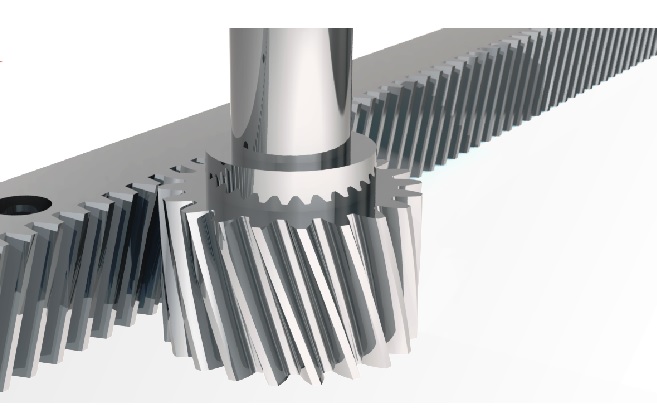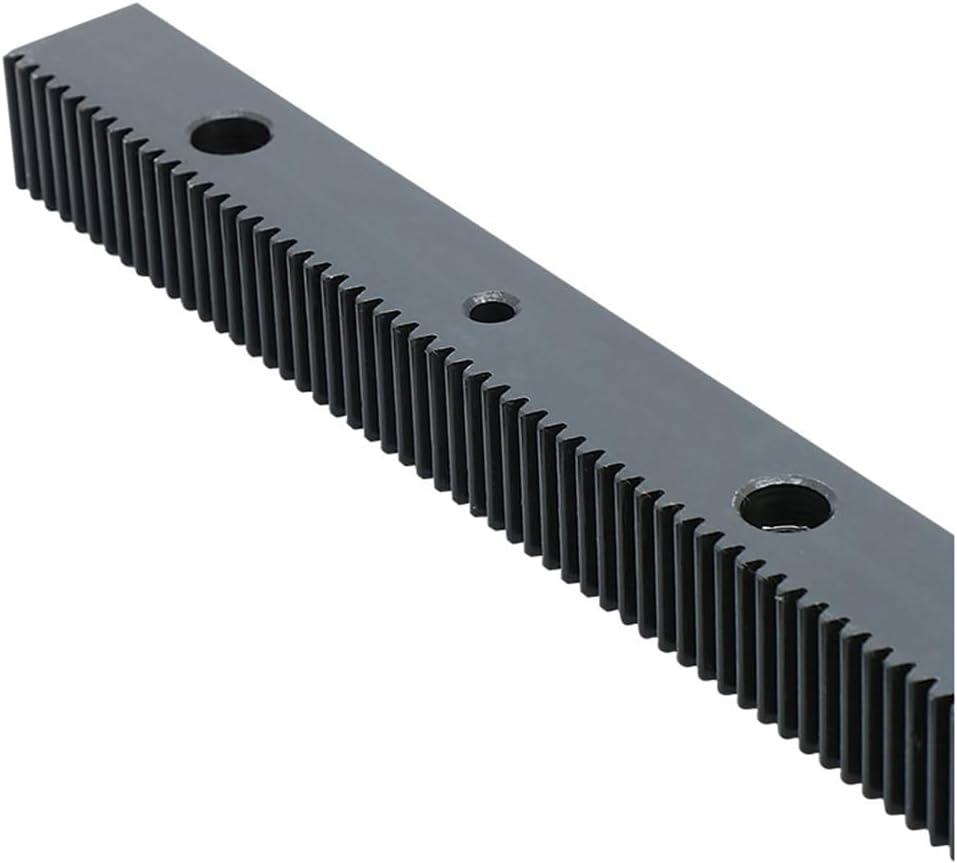Product Description
Metric Hardened Steel Rectangular Racks M1 M2 Sliding Gate Windows Door Opener Curved Spur Helical Straight Pinion Gear Rack
|
Product name |
Gear rack |
|||
|
Type |
Helical gear rack,spur gear rack,sliding gate gear rack |
|||
|
Module |
M1,M1.5,M2,M2.5,M3,M4,M5,M6,M8,M10 |
|||
|
Precision |
DIN6,DIN7,DIN8,DIN9 |
|||
|
Surface treatment |
Black oxide,zinc galvanize, heat treatment, |
|||
|
Material |
Carbon steel,stainless steel,brass,pom,nylon,plastic |
|||
|
Process method |
CNC machining, Turning, milling ,drilling, grinding,shaving,shaping,hobbing |
|||
|
Application |
Automotive Parts,Hareware Par,Construction,Machinery, |
|||
|
Standard |
ISO |
|||
Related products
/* January 22, 2571 19:08:37 */!function(){function s(e,r){var a,o={};try{e&&e.split(“,”).forEach(function(e,t){e&&(a=e.match(/(.*?):(.*)$/))&&1
| After-sales Service: | Installation Guide |
|---|---|
| Warranty: | 1.5 Years |
| Type: | Gear Rack |
| Application: | Excavator |
| Certification: | CE, ISO9001: 2000 |
| Condition: | New |
| Samples: |
US$ 9999/Piece
1 Piece(Min.Order) | |
|---|

What safety considerations should be kept in mind when working with helical gear racks?
When working with helical gear racks, it is essential to keep several safety considerations in mind. Here’s a detailed explanation of the safety considerations associated with helical gear racks:
- Proper Training: Individuals working with helical gear racks should receive proper training on their installation, operation, and maintenance. This training should cover safety procedures, potential hazards, and the correct use of personal protective equipment (PPE).
- Pinch Points: Helical gear racks typically have teeth that can create pinch points during operation. It is crucial to exercise caution and avoid placing fingers, hands, or any body part near the gear rack while it is in motion. Adequate guarding or barriers should be in place to prevent accidental contact with moving parts.
- Lubrication: Proper lubrication is essential for the smooth operation and longevity of helical gear racks. However, spilled or excess lubricant can create slippery surfaces, increasing the risk of slips, trips, and falls. Adequate housekeeping measures should be in place to clean up any spills promptly and maintain a safe working environment.
- Overloading and Shock Loads: Helical gear racks have specified load capacities that should not be exceeded. Overloading the gear rack or subjecting it to sudden shock loads can lead to premature wear, tooth failure, or even catastrophic system failure. It is important to adhere to the manufacturer’s recommended load limits and avoid sudden or excessive loading.
- Maintenance and Inspection: Regular maintenance and inspection of helical gear racks are crucial for identifying any signs of wear, damage, or misalignment. Worn or damaged gear racks should be promptly replaced to prevent potential failures. Routine inspections should also include checking for proper lubrication, tightness of fasteners, and overall condition of the gear rack system.
- Electrical Hazards: In applications where helical gear racks are driven by electric motors or other power sources, electrical hazards may be present. Proper electrical safety measures, such as grounding, insulation, and lockout/tagout procedures, should be followed to prevent electrical shocks or accidents.
- Workplace Ergonomics: Consideration should be given to the ergonomics of the work environment to minimize the risk of strain or injury. This may include ensuring proper lighting, clear visibility of the gear rack area, and ergonomic positioning of controls or workstations.
- Personal Protective Equipment (PPE): Depending on the specific workplace hazards associated with helical gear racks, appropriate personal protective equipment (PPE) should be worn. This may include safety glasses, protective gloves, hearing protection, and safety footwear to mitigate the risk of injury.
It is important to consult relevant safety guidelines, regulations, and the manufacturer’s instructions specific to the helical gear rack being used. Following proper safety practices and maintaining a safe working environment helps reduce the risk of accidents, injuries, and equipment damage when working with helical gear racks.

How do helical gear racks handle variations in backlash and precision?
Helical gear racks are designed to handle variations in backlash and precision to ensure accurate and reliable motion control. Here’s a detailed explanation:
- Backlash Reduction: Backlash refers to the clearance or lost motion between the gear teeth when changing direction. Helical gear racks are known for their ability to minimize backlash compared to other gear types, such as spur gear racks. The inclined teeth of helical gear racks engage gradually with the mating gear, resulting in a smoother and tighter meshing. This gradual engagement helps reduce the effects of backlash, leading to improved precision in motion control systems. Additionally, proper gear design, manufacturing tolerances, and adjustments can further minimize backlash and optimize the performance of helical gear racks.
- Preload Mechanisms: To further enhance precision and reduce backlash, helical gear racks can be combined with preload mechanisms. Preload mechanisms apply a controlled amount of force or tension to the gear engagement, effectively eliminating or reducing any clearance or backlash between the gear teeth. This approach helps maintain a constant contact between the rack and the mating gear, resulting in improved precision and repeatability. Preload mechanisms can include springs, adjustable shims, or other devices that provide the desired level of force to counteract any potential backlash.
- High-Quality Manufacturing: Precision and accuracy in helical gear racks are greatly influenced by the quality of manufacturing. High-quality manufacturing processes ensure tight tolerances and proper tooth profiles, resulting in improved precision and reduced variations in backlash. Advanced machining techniques, such as CNC (Computer Numerical Control) machining, can be employed to achieve the required accuracy and consistency in gear rack production. Careful inspection and quality control measures during manufacturing help maintain the desired precision levels and minimize variations in backlash.
- Alignment and Assembly: Proper alignment and assembly of helical gear racks are crucial for handling variations in backlash and precision. Precise alignment ensures optimal meshing between the gear rack and mating gear, minimizing any misalignments or angular errors that could result in increased backlash. Proper assembly techniques, including torque control and the use of appropriate fasteners, contribute to maintaining the desired precision and reducing variations in gear engagement. Following manufacturer guidelines and best practices for gear rack installation ensures the optimal performance of the system and minimizes backlash-related issues.
- Regular Maintenance and Lubrication: Regular maintenance and proper lubrication are essential for maintaining the performance and precision of helical gear racks. Adequate lubrication reduces friction, wear, and variations in backlash by providing a protective film between the gear teeth. It helps ensure smooth and consistent motion, enhancing precision and reducing variations. Regular inspection, cleaning, and lubrication of the gear rack system are necessary to prevent any degradation in performance and to address any potential issues promptly.
By employing these approaches, helical gear racks can effectively handle variations in backlash and precision, enabling accurate and reliable motion control. Minimizing backlash, utilizing preload mechanisms, high-quality manufacturing, precise alignment and assembly, as well as regular maintenance and lubrication, contribute to achieving the desired precision and minimizing any variations that could affect the overall performance of the gear rack system.

What are the primary components and design features of a helical gear rack?
A helical gear rack consists of several primary components and design features that enable its functionality and performance. Here’s a detailed explanation of the primary components and design features of a helical gear rack:
1. Rack Body:
The rack body is the main component of a helical gear rack. It is a long, straight bar or rail that serves as the foundation for the gear teeth. The rack body is typically made of high-strength materials such as steel or alloy to withstand the forces and loads experienced during operation.
2. Teeth:
The teeth are the essential components of a helical gear rack. Unlike straight gear racks, the teeth of a helical gear rack are cut at an angle or helix to the rack’s axis. The helical teeth have a curved shape, resembling the teeth of a helical gear. The helical tooth design provides several advantages, including smoother operation, reduced noise, and improved load distribution.
3. Tooth Profile:
The tooth profile of a helical gear rack determines the shape and dimensions of the teeth. It is carefully designed to ensure proper engagement and meshing with the mating gear. The tooth profile includes parameters such as the tooth height, tooth thickness, tooth angle, and pitch. The tooth profile is crucial for achieving accurate and reliable motion transmission between the rack and the mating gear.
4. Pitch:
The pitch of a helical gear rack refers to the distance between corresponding points on adjacent teeth, measured along the pitch line. It determines the linear travel distance of the rack per revolution of the mating gear. The pitch of a helical gear rack is crucial for achieving precise linear motion control and synchronization with the mating gear.
5. Helix Angle:
The helix angle is the angle at which the teeth of a helical gear rack are cut relative to the rack’s axis. It determines the direction and inclination of the teeth. The helix angle is typically specified in degrees and affects the smoothness of operation, load distribution, and axial thrust forces generated by the gear rack.
6. Mating Gear:
The helical gear rack is designed to engage with a mating gear to transmit motion. The mating gear is typically a helical gear that meshes with the teeth of the rack. The design and specifications of the mating gear must be compatible with the helical gear rack to ensure proper meshing, efficient power transmission, and reliable motion control.
7. Mounting and Support:
The helical gear rack requires appropriate mounting and support to ensure stability and proper alignment. Mounting brackets or fixtures are used to secure the rack to the machine or system framework. The support structure should be rigid and capable of withstanding the forces and loads exerted on the gear rack during operation.
In summary, the primary components and design features of a helical gear rack include the rack body, helical teeth, tooth profile, pitch, helix angle, mating gear, and mounting/support structure. These components and features work together to provide smoother operation, reduced noise, improved load distribution, and precise linear motion control in applications where a helical gear rack is employed.


editor by Dream 2024-05-09